Editor’s note: The author of this article is Hebrew U professor of archaeology, Dr. Gideon Avni, who is also the chief archaeologist of the Israel Antiquities Authority. Prof. Avni was previously featured on our site describing one of the world’s oldest Islamic holy sites that was discovered in Israel.
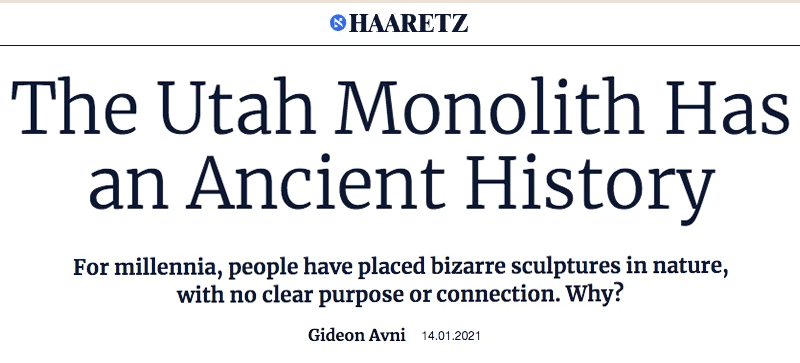
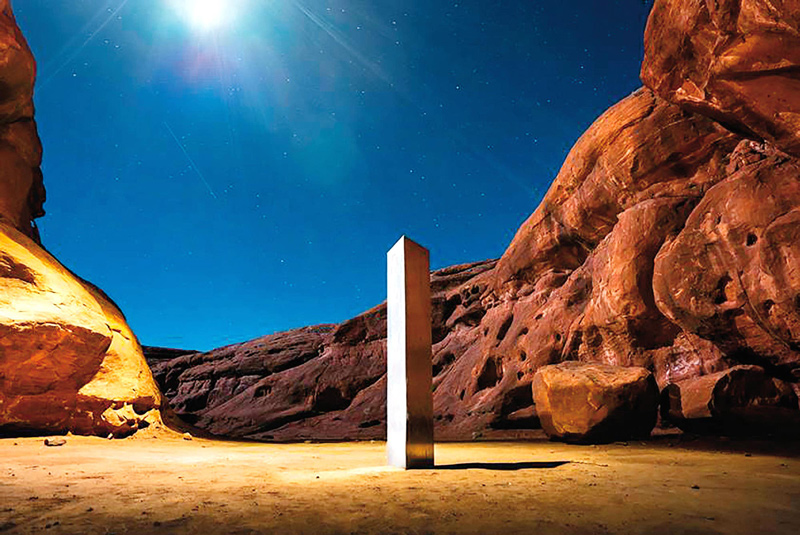
Lately we were apprised of an odd phenomenon that occurred almost simultaneously in a number of places: the mysterious appearance of shiny metal pillars, monolithic in appearance (from the Greek: mono, “one”; and lithos, “stone”). These monument-like structures were placed in remote locations, difficult to access, in different corners of the globe.
The story begins in the United States. A team from the department of public safety in Utah, flying low by helicopter over one of the remotest corners of the state’s colorful sandstone desert areas, in an effort to track wild sheep populations, suddenly spotted a glistening metal column amid the red rocks, something that seemed to have come straight out of a science fiction movie. The helicopter landed close by, the team filmed the mysterious structure and alerted law enforcement officials, in this case the rangers of the state’s parks department, who launched an investigation. Then, wondrously, a few days later the pillar disappeared, as if swallowed up by the earth.
This odd story went viral in the world media. The mysterious circumstances of the appearance and disappearance of the large metal pillar fired people’s imagination. What could it signify? Since that first discovery, more metal pillars have sprung up in different places: in Pennsylvania, the California desert, Colombia, Romania, Bulgaria, the Netherlands and apparently elsewhere as well. Most of the pillars are painted in shades of silver, though the one in Colombia is painted in gold.
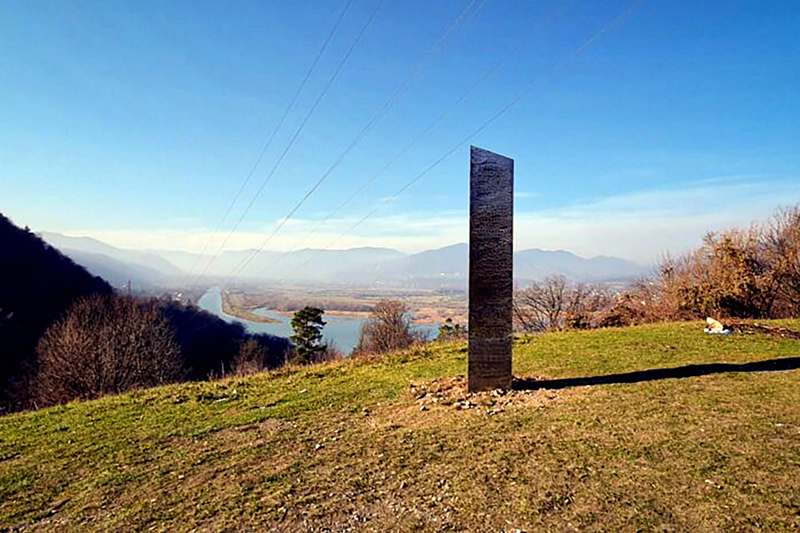
What is the meaning of these shiny metal blocks that, though placed in remote parts of the globe, seem to have been created by one guiding hand? Who installed them, and why? Among the explanations put forward in the media: an extraordinary sculptural initiative; an environmental protest; an artistic expression of existential anxiety caused by the coronavirus pandemic, and others. Art connoisseurs claimed that the structures are the work of John McCracken (1934-2011), a minimalist American sculptor who specialized in flat sculptures generally made of a single metal panel, monochromatic, that leaned against a wall, or imitations of his works.
The guessing game was soon joined by conspiracy theorists, advocates of supernatural manifestations and people looking for connections with creatures from outer space who left their imprint precisely in some of Earth’s most obscure sites. Suffice it to recall the opening scene of Stanley Kubrick’s iconic 1968 film “2001: A Space Odyssey,” in which ape-like hominids discover a glistening metal monolith which of course came from another world, and which shines radiantly in the dawning sun. The new and unknown object quickly becomes an object of adoration and worship. The hominids touch it with awe, dance around it and finally create themselves a new god, who, naturally, is associated with the sun’s glow in daytime and the moon’s glint at night.
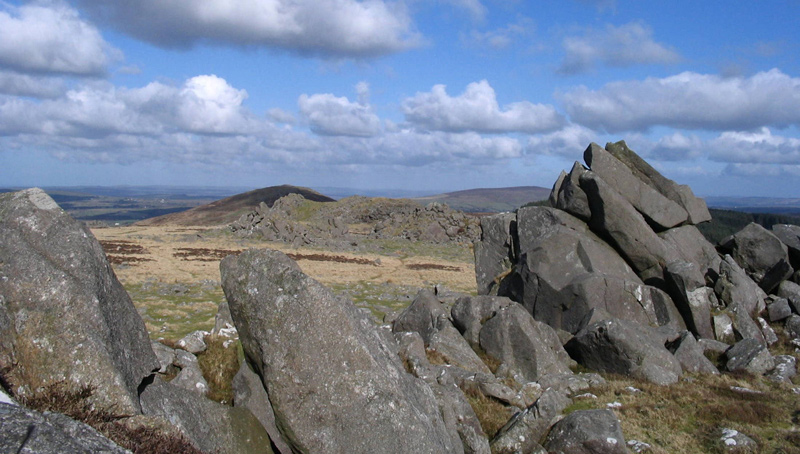
Bluestone standing stones didn’t have to be carved, they could be severed from the outcrop using crude stone wedgesCredit: Tony Holkham
Indeed, when this phenomenon is examined from the perspective of archaeologists, the feeling is that “we’ve been here before.” The work of megalithic cultures, so called because they used huge stones to craft impressive sites, existed in various places and forms in the ancient world: from vast monuments in Europe, including Stonehenge in southern England, to graves on which were placed immense stones in the shape of a table, known as dolmens, and large standing stones across the Eurasian Steppe that reflect the spiritual world of the steppe peoples.
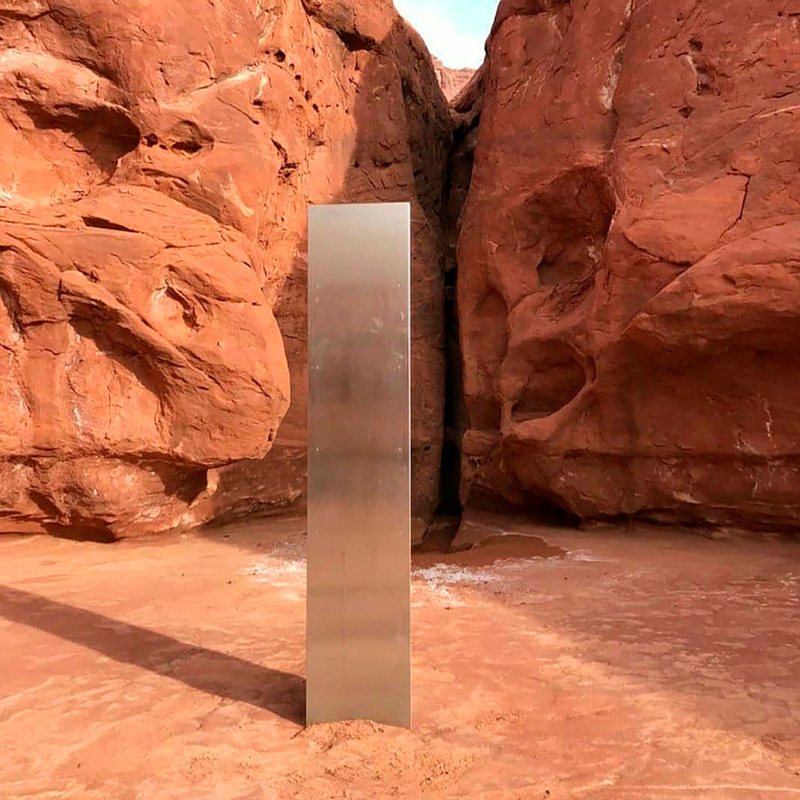
2021: A Sculpture Odyssey
Monoliths – huge stone monuments that were generally placed across the deserts and plains, below towering mountains or on summits with commanding views – were a widespread phenomenon in the ancient world, crossing borders and continents, and are the subject of extensive research literature. The questions the scholars ask focus on two areas: How did the ancients acquire the engineering knowledge necessary to quarry and transport prodigious stones weighing tens of tons? And how did these megalithic cultures spread in the world – as an invention in one place and the subsequent transmission of know-how to distant parts, or as a parallel human response in places distant from one another?
In contrast to other branches of world archaeology, the interest in megalithic cultures has transcended archaeology. Already in ancient times these vast stone monuments were magnets of interest for both locals and visitors, whether the pyramids of Egypt or the huge stone sites in the British Isles and France. Scientific interest in the megalithic cultures became one of the first fields of modern academic research and developed intensively in the 18th and 19th centuries in Europe, where these sites drew much attention both in both scientific and popular literature.
Devotees of the popular Asterix comic books, dealing with the brave Gallic warrior who fought imperial Roman rule, became acquainted with the megalithic world through the character of Obelix, the stonemason who creates huge stone structures called “menhirs” (“long stones”) and carries them from place to place on his back with the formidable strength granted him by the miraculous potion concocted by the local Gallic magician.
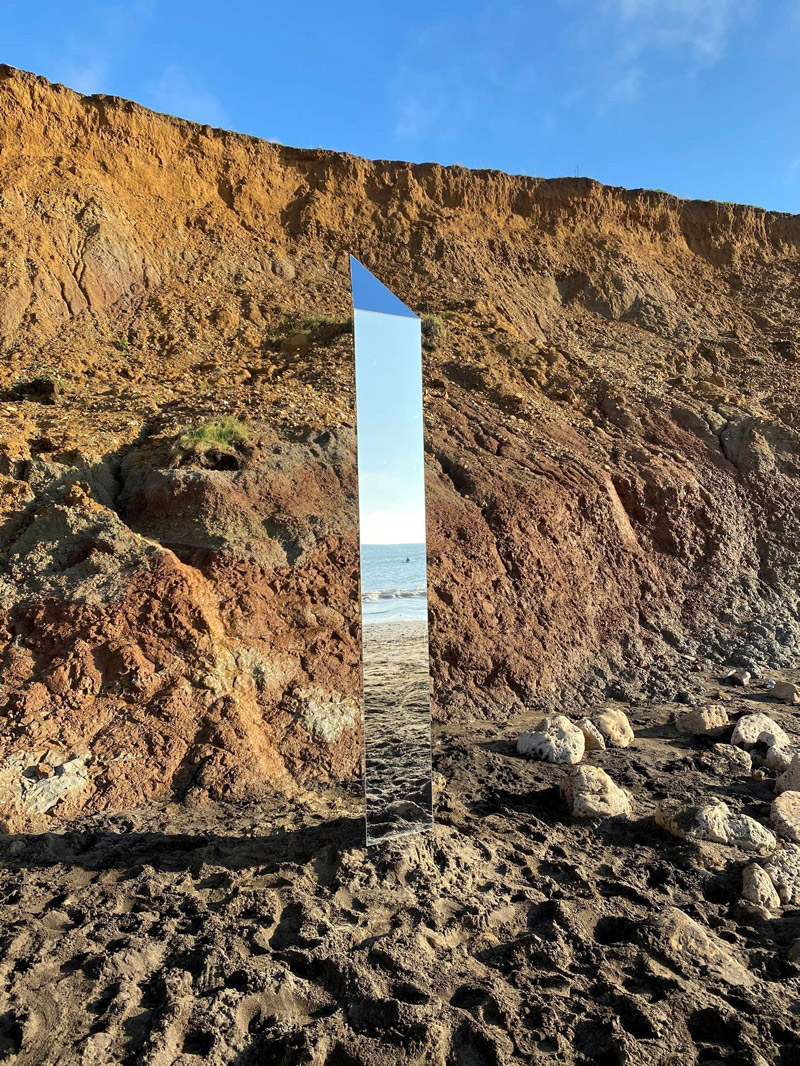
What caused people in different parts of the world and in different periods of human existence to give expression to their spiritual and cultic world by means of quarrying, transporting and installing immense stones – actions that in some cases required high technological capabilities, a great deal of time and extraordinary social organization? The scholar of religions Mircea Eliade developed an approach according to which, in every period, the religious and cultic identity of both the individual and society entailed the creation of impressive physical centers of identification, which forged in believers the sense of the divine that rules everything.
Eliade illustrated this in reference to different periods and cultures: from adoration of the heavenly bodies, including the sun and the moon, and unusual natural phenomena, to extraordinary works fashioned by humans, ranging from immense prehistoric stones to the impressive cathedrals of medieval Europe. Indeed, manifestations of this spiritual world can be found in the archaeological finds that are scattered in all the centers of early human culture.
One of the amazing sites that changed the view of scholars about the pace of development of human technology, is Gobekli Tepe, near the city of Urfa, in eastern Turkey. The site was discovered in 1963, but it was not until 1994 that its unusual essence was grasped, and since then it has been systematically excavated by archaeologists from the German Archaeological Institute and the Sanliurfa Museum.
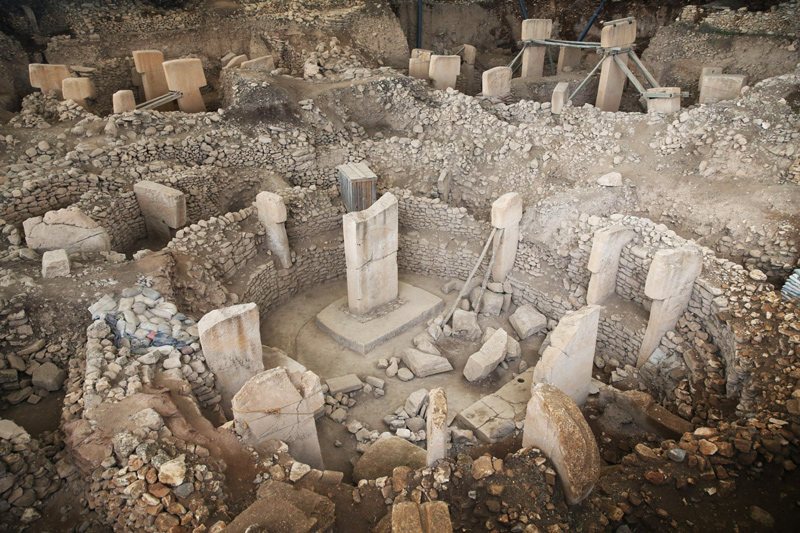
The site was dated to about 11,500 years ago (Pre-Pottery Neolithic period). This was one of the most significant periods in the history of human development, when the process began of the transition from hunter-gatherer societies to societies based on agriculture. The massive stone pillars decorated with human and animal figures found at Gobekli Tepe raise questions about the extraordinary technological capabilities of the population, which enabled them to quarry and emplace the huge works, together with the question of the religious motive and idea that underlie the structures. Possible interpretations include a wish to satisfy the desires of the gods, or to create a ritual framework for a successful hunt.
Similar questions arise in the viewer of the legendary megalithic site of Stonehenge, outside Salisbury, England, where massive stones were placed that were brought from quarries dozens of kilometers away, demonstrating extremely impressive technological skills. Recent studies have dated the installation of the monuments to the 3rd millennium BCE, a period in which the human culture in the British Isles had not yet developed any unusual architectural expression and was almost wholly based on basic agriculture, along with hunting. From the beginning of the modern age down to our day, Stonehenge has been a wellspring for esoteric interpretations seeking to understand the intention of the builders of this strange, mammoth monument.
The placing of the immense stones in a way that correlates with astronomical considerations of the seasons and the shortest and longest days of the year is cause for astonishment on the part of both the multitudes of visitors and the scientific community. Researchers are trying to solve the riddle of who these inhabitants of southern England were who invested immense efforts to build a clearly non-utilitarian facility that demonstrates far-reaching astronomical knowledge and technological prowess.

Impressive evidence of a different kind of the positioning of massive stones, in this case shaped in human forms, is found on Easter Island, in the heart of the Pacific Ocean. Here, too, the reason for the craze for standing sculptures that gripped the island’s inhabitants in the Middle Ages is not clear. It has been explained as a struggle for territory and control, or as a type of ritual activity to placate the gods.
Expressions of this rich spiritual world in archaeological findings exist in the Land of Israel, too. Dolmens, the immense stone tables that cover ancient graves form the Early Bronze Age, are scattered in various places in Galilee and the Golan Heights. One of the most impressive monuments of these cultures is found in the center of the Golan Heights. Rujm el-Hiri, or Gilgal Refa’im (“wheel of ghosts”), as it’s known in Hebrew, consists of a series of large circles of rocks in the center of which is a mound made from huge stones. Far to the south, too, In the western Negev Highlands, one can find long lines of stones stretching for kilometers, which took a great deal of work to create and which appear to lead from no place to nowhere.
The outstanding motif of all these sites is the transportation and emplacement of massive stones weighing tens and hundreds of tons. Human capability to quarry and move these exceptionally large stones has been documented in various cultures throughout history, and the megalithic cultures of Europe occupy a distinguished place in the hierarchy of the world’s most massive monolithic stones. The largest monolithic stone that was shaped and transported by people, weighing in at almost 1,000 tons, was discovered in recent years at the Roman temple in Baalbek, Lebanon.
Jerusalem, too, is well represented in the list of the top 10 of the world’s largest stones, in the form of one of the immense stones at the base of the Western Wall, which can be viewed from the Western Wall Tunnel. It’s about 15 meters long, 3 to 5 meters high, and weighs between 500 and 600 tons. These building stones were usually used in massive structures bearing ritual importance. The efforts of the builders in quarrying and transporting the stones can be understood as part of an effort to glorify the rulers or the imperial authorities who were in charge of the construction. Another advantage of making use of these gargantuan stones was to enhance the amazing ritual structure in the eyes of its visitors – a fusion between religious ideology and an approach to the human spirit, as explained by Mircea Eliade.
What stands out in a global, multiple-era view of these monuments is the existence of the same conceptual underpinning in different parts of the world. There is no likelihood that the sites are the physical expression of an idea that emerged from one specific place and spread across the globe, among cultures between which there was no connection. The most salient example of this is the resemblance in form between the pyramids in Egypt and those in Central America, such as in the Yucatan region of Mexico. Could it be that the answer to this stylistic resemblance is implanted in the human psyche, which finds similar expressions of its spiritual world even in places culturally and physically distant from one another?
In light of this interpretation, the appearance of modern monoliths in different places can be likened to the ancient megaliths. The concept is apparently similar, stemming from the human desire to give expression to the spiritual world of the individual and the community by physical means. The obvious difference has to do with modern communication networks that transmit information across the globe in seconds.
The idea that apparently came to an information American artist, of placing the metal monolith in Utah, and the rapid reporting of its finding in the electronic media, quickly fired the imagination of people in Bulgaria, California, the Netherlands and perhaps elsewhere, and within days imitations of that impressive monolith appeared. And how did it work in the ancient world? Was it by transmitting knowledge across large spaces (naturally at the pace of that time: months, years and generations, instead of minutes, hours and days in our time)? Or is it an expression of humanity’s spiritual world, which finds similar channels in places physically and culturally remote from one another? That is one of the central questions addressed by studies dealing with technological inventions and their dissemination across the ancient world.